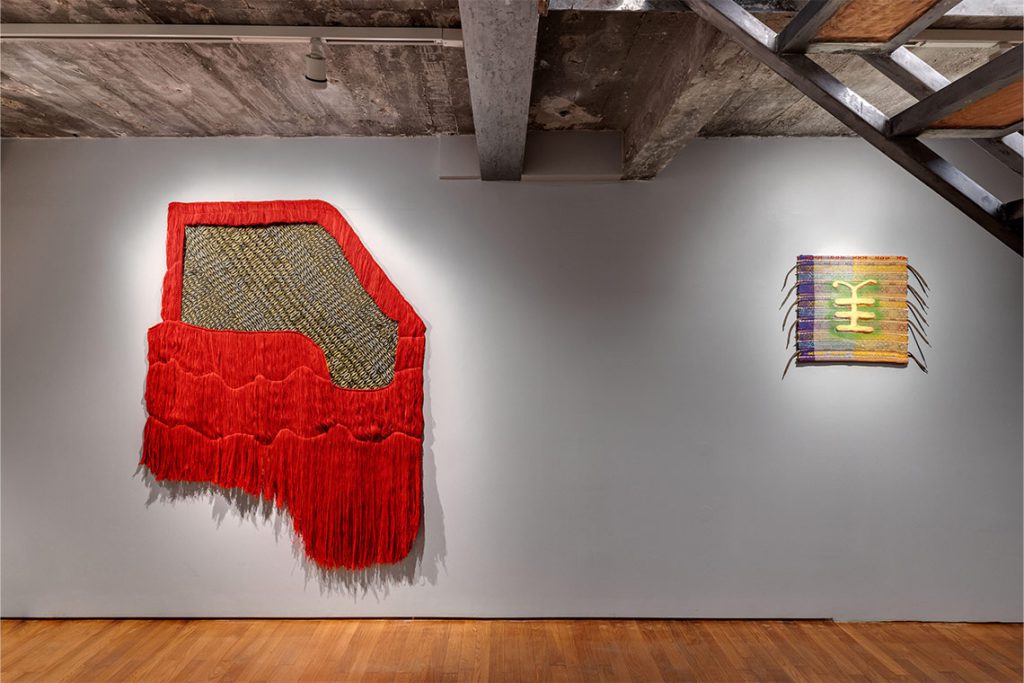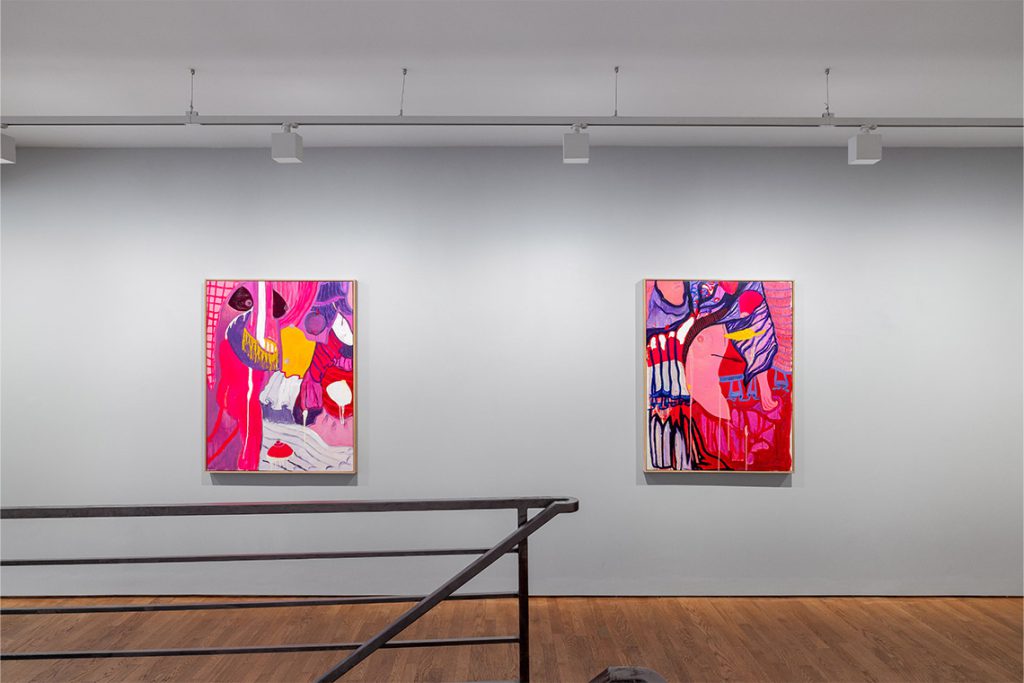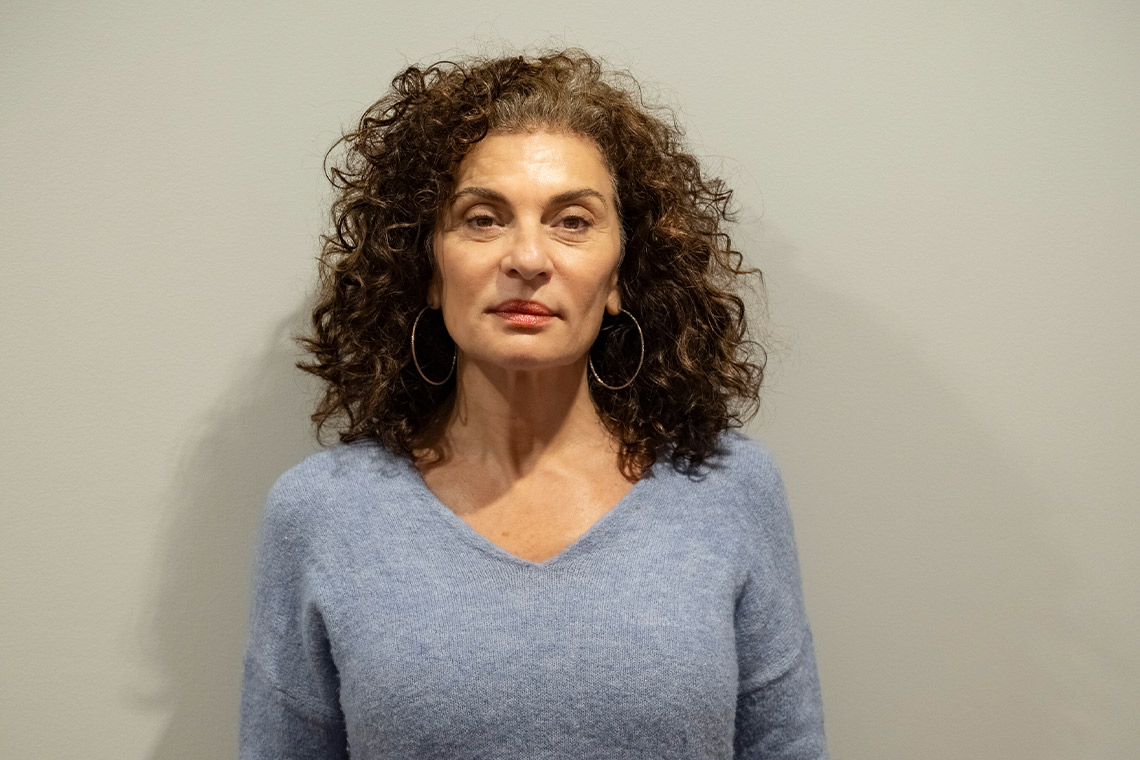The French-Tunisian founding director of her eponymous gallery in Paris and former director of Elmarsa Gallery (Tunis/Dubai), works across modern and contemporary art to support North African and Middle Eastern artists on a global stage.
Canvas: What initially drew you to art?
Lilia Ben Salah: My involvement in the art world emerged rather serendipitously more than two decades ago. I met Moncef Msakni, the founder and owner of Elmarsa, when I moved to Tunis in 2003 and joined him that year at the gallery. While I had always maintained an interest in art, as many raised in Europe do, it was through this experience that I was introduced to the inner workings of the gallery world, the artistic community, and the historical and contemporary North African art scene.
How have galleries changed during your time?
The role of galleries has undoubtedly evolved, particularly in recent years. Elmarsa, founded in 1994, is a leading gallery for contemporary artists with a strong emphasis on modern art. The gallery developed over time. In the early days of Art Dubai and Abu Dhabi Art, there was little interest in modernist works, yet we were among the first to present striking booths showcasing artists from the 1940s, 50s, and 60s through to the 2000s. Though a niche focus, his was crucial in highlighting the foundations of contemporary North African art.The landscape shifted rapidly as art market trends evolved with a growing global audience and increased interest from international collectors. Since the early 2000s, our aim has been to elevate the artists on the international market. Over the past 20 years, I have worked across Tunis, Dubai and, more recently, Paris, and I have witnessed the development of the broader regional ecosystem. The UAE, for instance, stands out as a prime example of this transformation. We were involved in Art Dubai from its inception, as well as in Abu Dhabi Art and with Sotheby’s and Christie’s, and collaborated with the media, positioning ourselves as one of the few international galleries from the region. This marked the beginning of our showcasing Tunisian, Algerian and Moroccan artists through participation in global fairs and the creation of offsite projects, as Tunis was very little visited by international collectors or institutional players. In 2015, we expanded by opening a space in Dubai, which was a strategic move to bring more visibility.
Our mission has been to promote the North African art scene and its history – not only in preserving its cultural heritage but also in broadening regional representation to foster a more inclusive understanding on the international stage of artistic narratives from the Maghreb, Africa and the Middle East. By continuously expanding visibility and presenting artists whose work reflected the socio-political shifts of their time but also laid the foundation for contemporary artistic expressions, we significantly contributed to contextualising the modern era. From pioneering artists during colonialism, such as Yahia Turki (1903–69) – who we showcased at Art Dubai Modern in 2016 – to those from post-independence movements in the second half of the twentieth century, these figures shaped North Africa’s artistic identity.

You are independent now, having opened your own space in Paris two and a half years ago.
A pivotal shift occurred in the 2010s, as international audiences began paying greater attention to the region’s art scenes, spurred by emerging opportunities in the UAE. The enthusiastic reception from collectors and institutions for the artists and our exhibitions reinforced the importance of expanding these efforts, ultimately influencing my decision to move to Paris. It was a natural choice for its global significance in contemporary art, its cultural crossroads and dynamic network of institutions, collectors and curators. The city’s ability to reinvent itself while embracing its rich heritage makes it an ideal setting for artistic exchange. On a personal level, it also holds deep significance. Although I could have remained in Dubai, I had been carefully considering this project for some time. I felt it was essential to establish a platform where I could leverage my cosmopolitan background, enriched by 20 years of experience, to elevate the visibility of contemporary artists beyond their geographical contexts. In doing so, I aim to offer a new perspective on art history by presenting the work of significant historical artists. Their contributions continue to resonate today, and I believe reconsidering their legacies can bring a deeper understanding of their impact on the global art scene.
How have increased awareness and exposure changed the perception of art and artists from North Africa?
They have been very important, but the shifts in society following the Arab Spring have also played a pivotal role. Having worked in Tunisia before and after the 2011 revolution, I witnessed how, prior to the revolution, artists often restrained their expression due to societal, political or cultural constraints. Post-revolution, a newfound sense of freedom emerged, encouraging a more dynamic artistic landscape. From an external perspective, there has been a noticeable expansion in the diversity of artistic voices, nurtured by growing international attention. Is it still relevant or important to maintain regional distinctions when discussing artists and art scenes?When we started exhibiting artists internationally, it was essential. Highlighting the culture, heritage and history of the North African art scene was crucial in fostering deeper understanding and appreciation. North Africa has often been seen as distinct from the rest of the continent, with Africa more commonly associated with Sub-Saharan countries in the collective consciousness. At that time, it was important to assert “We are here too!” However, our cultural ties to the Arab world have also shaped our identity, positioning us within a broader, interconnected artistic landscape. This dual belonging has enabled us to engage with multiple artistic and historical narratives, expanding exchange and dialogue. That said, regional distinctions and influences should not be seen as a limitation, but rather as a value in shaping artistic practices and contributing to global dialogue through a unique foundation.

Did regional categorisations make it more challenging to find a space in which to exist and grow?
It was an exciting time, as interest in the region’s artistic richness was increasing. An artist’s identity – their heritage, influences and background – is not a constraint but a source of depth, inspiration and ultimately the true wealth of their practice. However, institutions and art players often viewed us strictly through the lens of “North African art”, as if filling a quota. Over time, these categorisations became limiting – once attached, they are hard to shake off. By 2015–17, we felt strongly the need to rethink how we positioned the gallery and presented the artists. Fortunately, as the art world evolved, so did the global visibility of the wider MENA region. This allowed for greater fluidity, enabling artists to be appreciated beyond geographical considerations while still honouring the narratives that shape their work.
How does lilia ben salah gallery fit in?
My vision is rooted in inclusion, not exclusivity. lilia ben salah gallery seeks to embrace diverse artistic practices shaped by today’s shifting cultural, ecological and political landscapes. With expertise in North African art – long overlooked, despite its influence on Western art – I aim to challenge rigid categorisations and expand these narratives from a global cultural hub like Paris. The gallery’s curatorial approach focuses on bold artists fostering cultural hybridisation and its contribution to societal development. I also strive to reposition historical artists from Africa and the Middle East, including Amal Abdenour (1931–2020), Inji Efflatoun (1924–89), Baya Mahieddine (1931–98), Chaïbia Talal (1929–2004) and Mahjoub Ben Bella (1946–2020). Currently, we are showcasing a duo exhibition featuring Georges Koskas (1922–2013) and Farah Khelil, entitled Discrete Topology. We are thrilled to present Farah at Drawing Now 2025, where she is shortlisted for this year’s Drawing Now Prize.
Since the opening of the gallery in Paris, I have also been highlighting female artists. Within my first year and a half, I organically programmed seven solo exhibitions featuring women artists, including Amel Bennys, Zoulikha Bouabdellah and Farah, alongside emerging voices like Camille Pradon, Malaika Temba and an upcoming show by Emma Ben Aziza. I aim to continue supporting the artists I believe in, collaborating closely with them, inviting curators to develop projects, facilitating greater engagement opportunities for collectors and institutional players, and, above all, presenting and sharing the art I truly love.
This interview first appeared in Canvas 117: The Maghreb Issue



